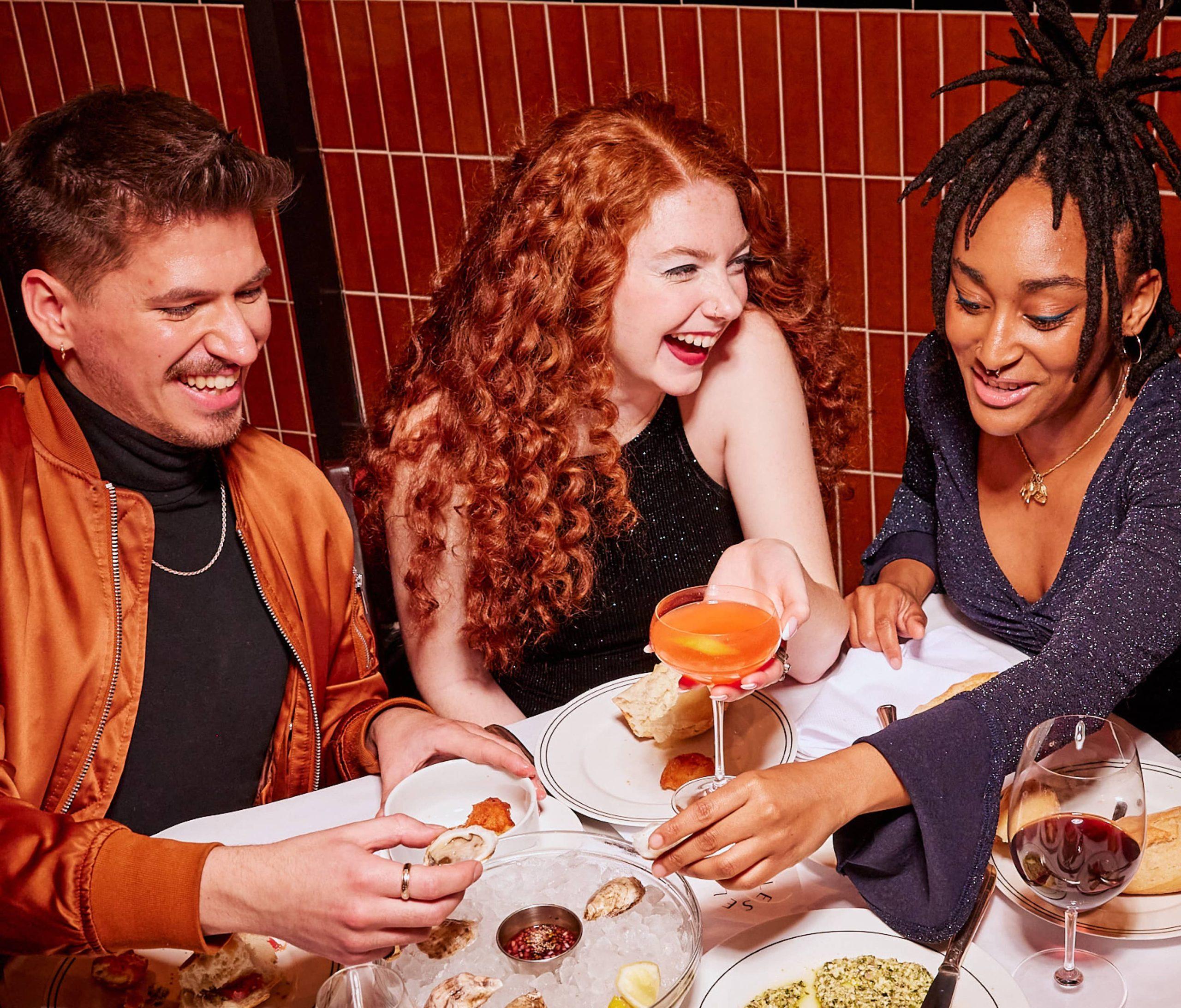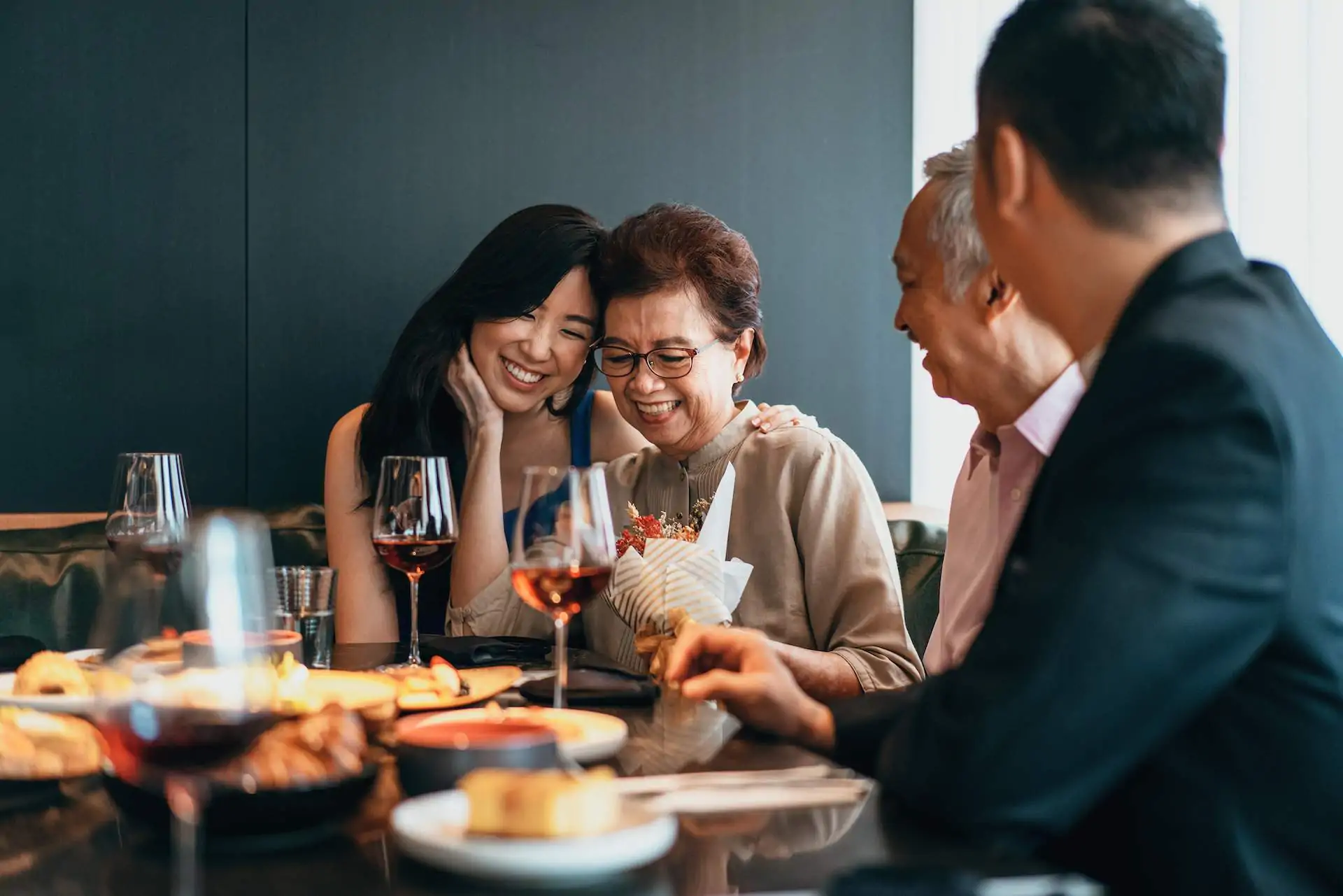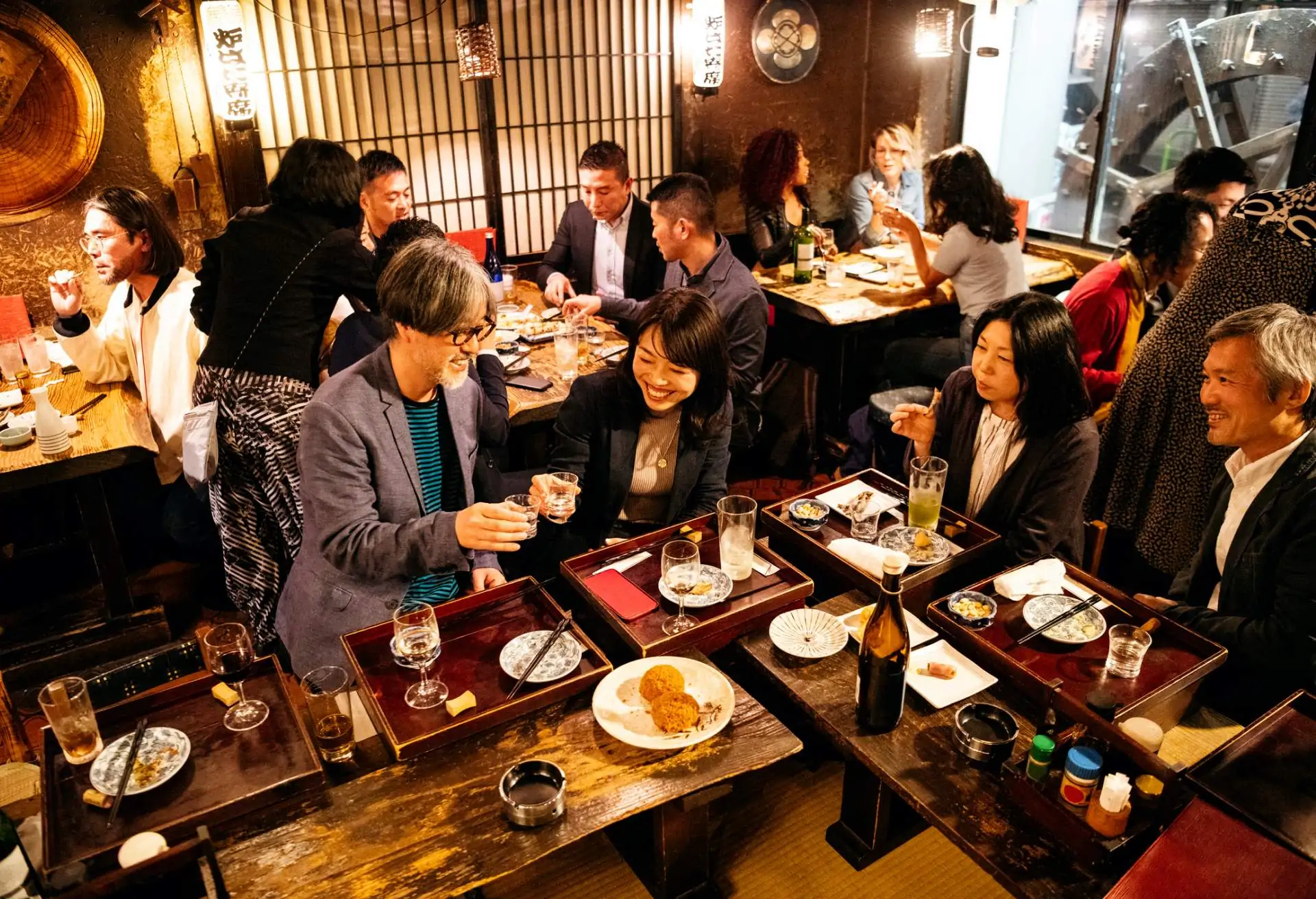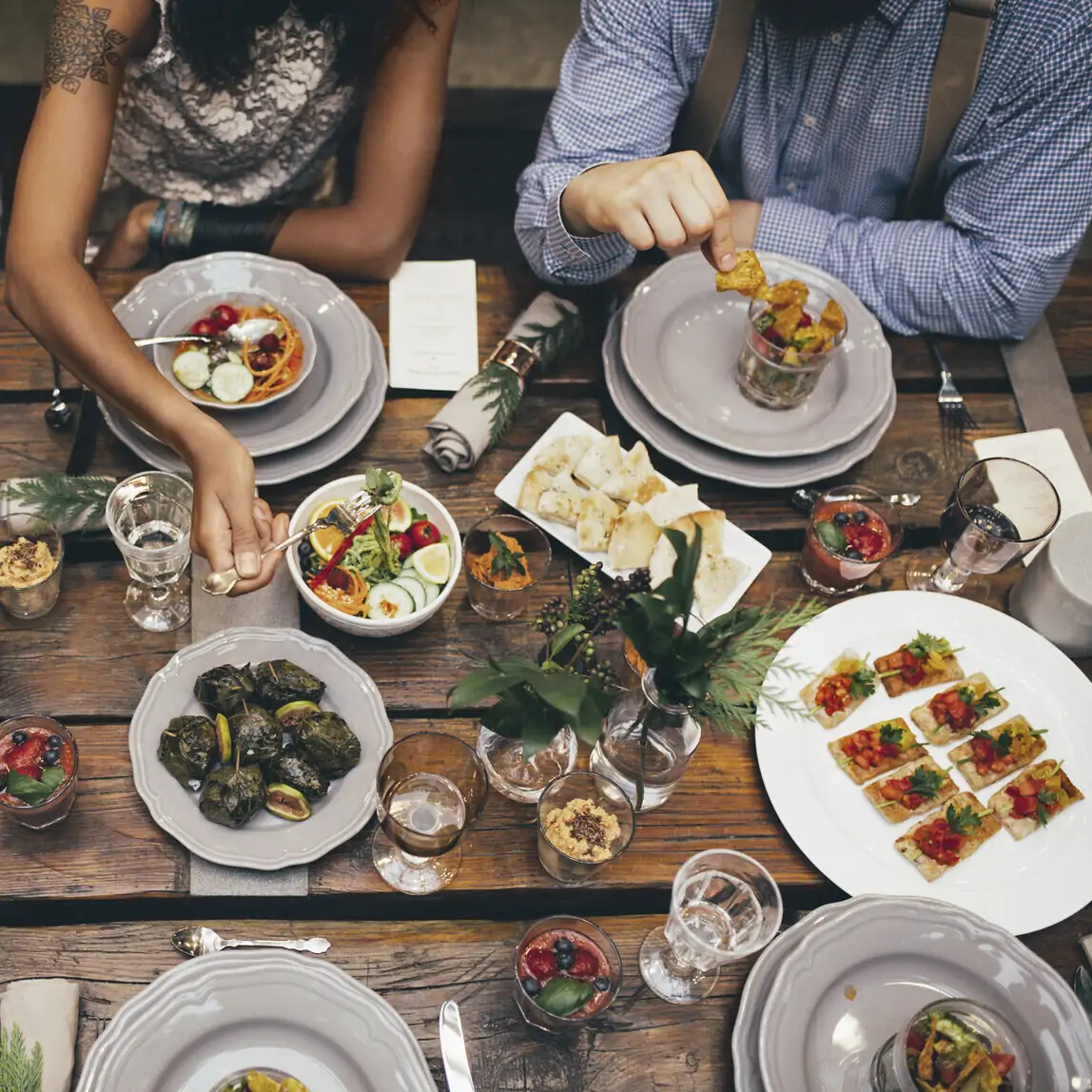Private dining is more than a secluded spot for guests to enjoy a meal away from other diners. It’s a fully functioning arm of your restaurant that adds another layer to what you offer while increasing revenue.
These spaces are popular with guests, and offering private dining can help take your service to another level. With that in mind, this guide has everything you need to know about creating and advertising the perfect private space in your restaurant.
Quick links
- Why private dining rooms?
- Legal requirements and planning
- How to set the scene with your private dining room
- Making the right menu choices
- Staff training
- Marketing your private dining experience
- Measure progress throughout the year
- After the event
Why private dining rooms?
Private dining rooms can be a great addition during busy times of the year, such as the holiday season. But when done right, they offer year-round benefits that give your restaurant another dynamic.
Increased revenue
An immediate benefit to having private dining rooms is the potential for increased revenue. These exclusive spaces can be booked for a variety of events, from corporate dinners to intimate celebrations. They provide a steady income stream separate from the general dining area.
Versatility
Private dining rooms offer versatility, whether it’s formal dinners or casual gatherings. You can do it all to appeal to a wide range of diners. And let’s not forget that such adaptability is also a smart way to use your space more efficiently. As well as broadening your restaurant’s appeal, you’re optimizing operations.
Unique Selling Point
Private dining rooms can offer a unique selling point for restaurants, meaning you can provide an edge over competitors that don’t offer the same features. It’s more likely that someone in the area will choose your spot if they’re after a private dining function.
A chance to impress
With a private dining room, guests receive a unique, personalized experience that can convert them from one-time diners visiting with their party into repeat guests. The exclusivity and tailored service that comes with these private spaces often exceed diner expectations, leading to positive reviews and word-of-mouth recommendations. This, in turn, enhances the restaurant’s reputation and customer loyalty.
The addition of a private dining room offers multiple benefits. From revenue generation and customer satisfaction to versatility and competitive edge, private dining rooms are a worthwhile investment for any restaurant.
Legal requirements and planning
Before launching your private dining service, make sure you have all the necessary permits and licenses in place. This includes
- Maintaining an up-to-date business license
- Food service permit
- Appropriate liquor license if you plan to serve alcohol.
Additional permits
Some jurisdictions may require additional permits for large gatherings or events with live music. Check your certificate of occupancy to confirm the maximum number of guests allowed in your private space. You should also review local zoning regulations, noise ordinances, and parking requirements so you comply with community standards.
Insurance
Insurance is another important consideration. Make sure your liability coverage extends to private events, and consider requiring signed contracts that outline responsibilities and include indemnification clauses. This way, you’re protecting both your restaurant and your guests.
Health and safety
Don’t overlook health and safety standards either. Maintain proper food handling protocols and make sure emergency exits remain unobstructed during events. Taking care of these requirements upfront will help create successful, worry-free private dining experiences for your guests.
How to set the scene with your private dining room
Setting the scene in your restaurant’s private dining room involves more than laying out some tables and chairs. It’s an art form that combines various elements to create a memorable dining experience.
Ambiance
The overall vibe of the room sets the tone for the evening. Whether you’re aiming for a romantic, intimate setting or a lively, social atmosphere, the ambiance is the invisible thread that ties everything together. It’s the difference between a forgettable meal and an unforgettable experience.
Importance of lighting
Never underestimate the power of good lighting. It can make your food look appetizing, your décor wow, and your guests look and feel fabulous. Soft, warm lighting creates a cozy, intimate atmosphere, while brighter, cooler lighting energizes a room. Aim for adjustable lighting to suit different moods and events.
Music and sound
The right playlist elevates the dining experience to new heights. Whether it’s soft jazz for a small gathering or upbeat tunes for a birthday celebration, the music should complement the mood you’re trying to set. Just remember, the volume should be set at a level where it adds to the atmosphere but doesn’t drown out conversation. Guests may also wish to bring their own playlist.
Decor and theme
Last but not least, the décor should align with the restaurant’s overall theme or concept. Whether it’s minimalist chic, rustic charm, or opulent luxury, the décor sets the visual tone of the room. Consider elements like artwork, table settings, and even the color scheme to create a cohesive look.
Consider sem-private dining spaces
If your restaurant doesn’t have the space to facilitate a private dining room, try carving out an area. To make a private area without building walls, use curtains to separate the space. Spread tables a bit further apart to give a private feel. Add some plants or string lights to make it special. This way, you can host events when needed and still use the space for regular dining when it’s not booked.
Close the restaurant
Consider offering your whole restaurant for private bookings, especially if you’re a smaller venue. Crunch the numbers to see if the pricing is right for a full-venue buyout. You can also test the waters by allowing venue rentals just before or after busy hours. Full buyouts are attractive to various groups because they give them exclusive access to your space, and people are usually willing to pay a little more for the privilege.
Making the right menu choices
Your menu choices will shape the dining experience, especially in a private setting where guests have more expectations. Here’s how to make it exceptional.
Customized menus
Offering a tailored menu adds a personal touch that guests truly appreciate. It shows thoughtfulness and attention to detail, making the event feel exclusive. Customization can range from mixing and matching elements of your menu to offering items not available on the regular menu. Not only does this add a unique twist to the dining experience, but it also serves as a major selling point when people are deciding where to book their special event.
Beverage pairings
The magic of a great meal often lies in the perfect pairing of food and drink. Suggesting wines, cocktails, or even mocktails that complement the flavors of the menu will only add to the overall dining experience. For instance, a crisp white wine might go beautifully with a seafood dish, while a robust red could be the perfect match for a hearty steak. Don’t overlook non-alcoholic options, either. A well-crafted mocktail can be just as satisfying and can make non-drinkers feel included in the experience.
Staff training
Yes, the menu needs to capture the imagination. But the service is equally as important for creating a guest experience that goes beyond expectations. Your staff should be well prepared to provide five-star service to private dining guests.
Specialized staff
Having a team that’s trained in the art of private dining is a big help. They should know the ins and outs of the more intimate settings found with private dining experiences. Offering even more personalized service than usual and paying attention to the minute details will go a long way to crafting an excellent private dining setup.
Training tips
Staff should be trained to anticipate guests’ needs, respond promptly to requests, and manage any issues with grace and professionalism. They’re unlikely to be in high demand during a private dining function, which means being alert and ready takes on even more importance.
Upsell
Upselling is another skill that can maximize revenue and help enhance guest satisfaction. Staff should be adept at subtly suggesting add-ons or premium options that complement the guest’s choices without being pushy.
Making it bespoke
A thorough understanding of any customized menu is also important. Staff need to be able to explain the dishes, the ingredients used, and how they are prepared to lots of people at once. They should also be knowledgeable about the beverage pairings, offering suggestions that will enhance the dining experience.
Marketing your private dining experience
Marketing your restaurant with a private dining room will increase demand and attract bookings while maximizing its revenue potential.
Website
Dedicate a website section promoting your private dining room. From high-res images that capture attention to testimonials of guests saying what a great time they had, your webpage should highlight all that’s good. Round it up with a bold call to action so people can make a reservation.
Social media
Leverage social media with platforms like Instagram to spotlight your private dining space. Share snaps of chic table setups, special dishes, and joyful guests to spark buzz. Amp it up with targeted ads to reel in those hunting for private dining spots.
Table tents
Table tents displaying information about the private dining room can catch the eye of diners already enjoying your restaurant, making them more likely to consider it for their own events.
Staff recommendations
Staff should also mention the private dining room as an option for special occasions when it’s appropriate to do so.
Local partnerships
Additionally, forming partnerships with local event planners can be a win-win situation. They get a reliable venue to recommend to their clients, and you get a steady stream of bookings. And don’t forget about using online platforms like OpenTable. Diners are regularly searching for restaurants with private functions. Listing your space means you’ll attract guests actively looking for venues like yours.
Show what makes your space so special
Listing your seating capacity or space size is useful, but what truly makes your restaurant memorable is its unique features. This is where you need to put on your event planner hat and convey why you’re special. Whether it’s a standout dish, live entertainment, or unique event concepts, focus on these elements to explain why your venue is the perfect choice for a special occasion.
Seasonal considerations
Adapting to the seasons and holidays not only keeps your offerings fresh but also makes your venue more appealing for various types of events 365 days a year.
Adapting for holidays and seasons
When it comes to decor, think about how you can easily switch elements to suit different seasons or holidays. For instance, during the festive period, a few tasteful decorations and a warm, cozy atmosphere can make restaurants with private dining rooms the go-to for holiday parties.
Come summer, lighter fabrics, fresh flowers, and a brighter color palette can transform the space into an ideal location for summer soirees. Aim to have versatile decor elements that are easy to swap out but make a significant impact on the room’s ambiance.
Seasonal menu changes
A static menu can get stale, no matter how exquisite the dishes are. Keep it fresh with seasonal menu options that sync up with the time of year. That might be comfort food in the winter or lighter bites during the warmer months. Create an experience that goes beyond the regular menu and gives private diners something a little different.
Measure progress throughout the year
Many restaurants overlook the importance of monitoring their performance when it comes to private dining. Regularly measure your progress to identify what’s effective and what needs improvement.
After rolling out a new marketing campaign, keep tabs on the increase in enquiries or bookings for private events. Comparing these figures with data from the previous year or months can also be enlightening.
You can then set future goals based on this information. Remember that it’s a learning curve, and without these metrics, you won’t know what adjustments are needed.
Keep the connection going after the event
Building lasting relationships with your private dining guests doesn’t end when they walk out the door. A thoughtful follow-up strategy can turn one-time events into repeat business.
Show your appreciation
Send a personalized thank-you message the day after the event. It’s a simple gesture that goes a long way. Ask for feedback while the experience is still fresh—what they loved and what could have made their event even better. Their insights are gold for improving your service.
Turn guests into advocates
Happy guests often become your best marketers. Encourage them to share their experience on platforms far and wide. Consider offering a loyalty program specifically for private events. Perhaps a discount on their next booking or special perks for repeat corporate clients.
Stay in touch
Keep track of important dates and preferences. If a couple hosted their rehearsal dinner with you, reach out around their anniversary. For corporate clients, note their annual events and contact them early to secure repeat bookings.
It’s much easier (and more cost-effective) to keep existing diners coming back than to find new ones. Make them feel valued beyond that single event, and they’ll think of you first for their next celebration.
How to make private dining rooms work for your restaurant
Setting the scene in your private dining room requires a holistic approach. Get it right, and you’ll create a private dining setting that impresses guests and adds to the occasion.




